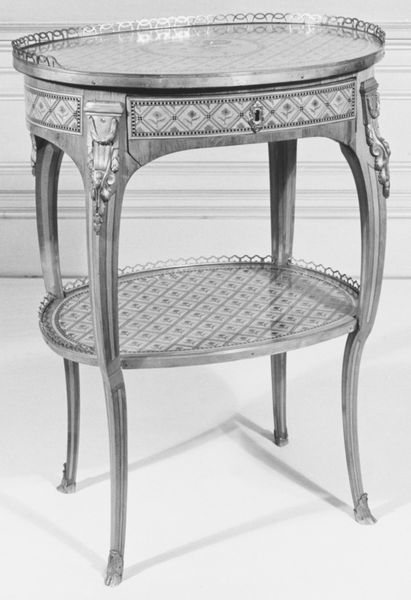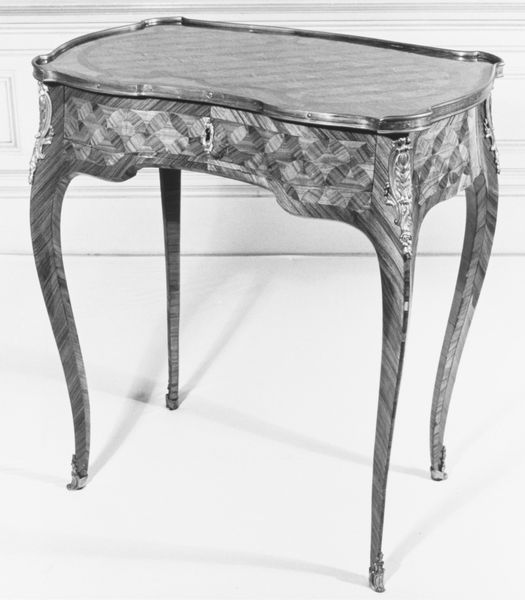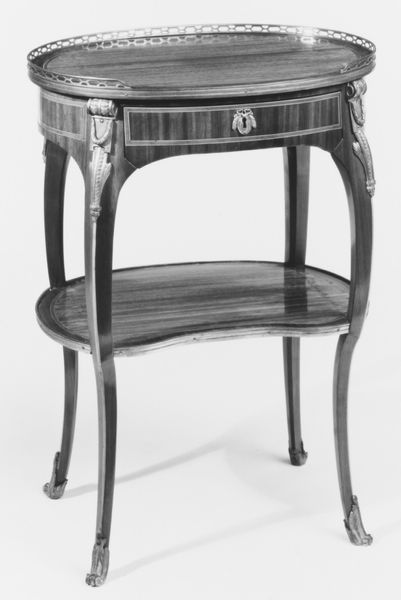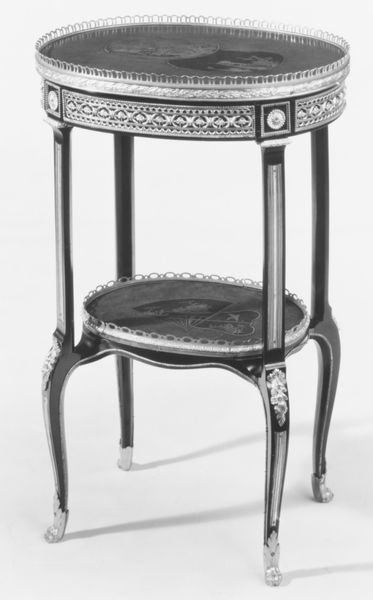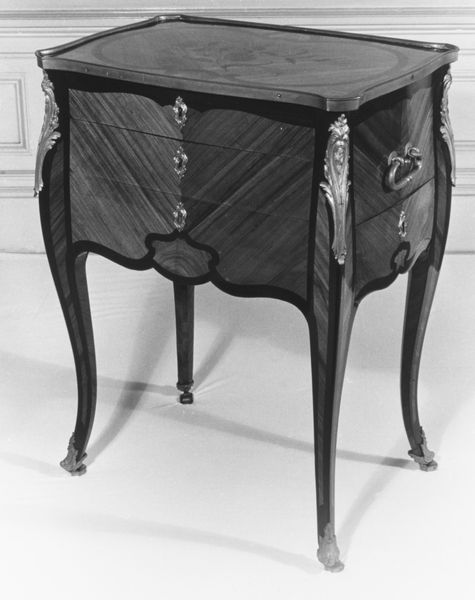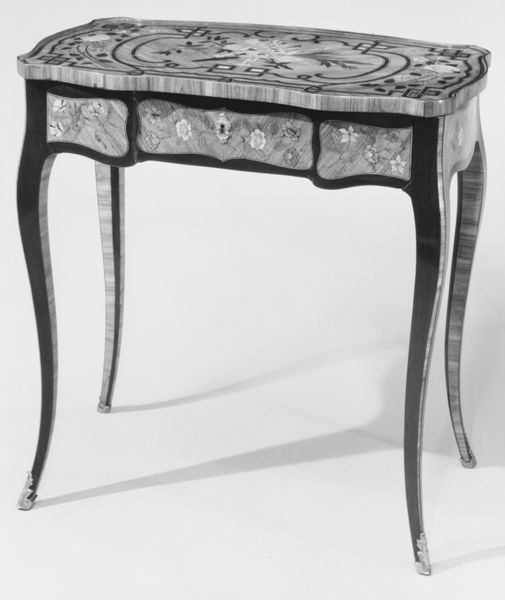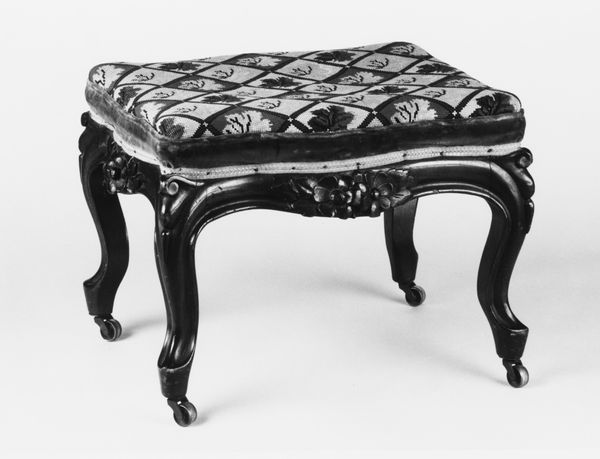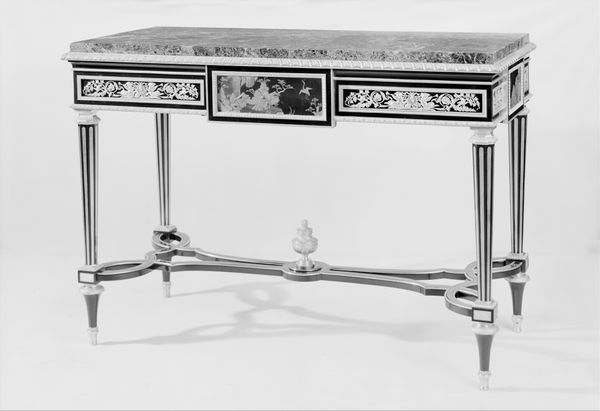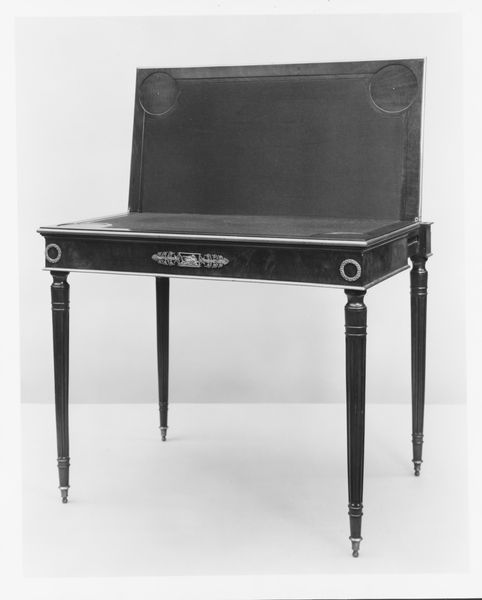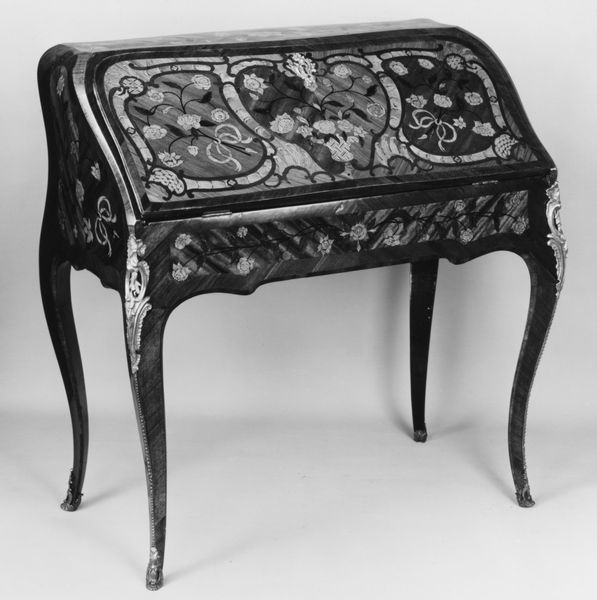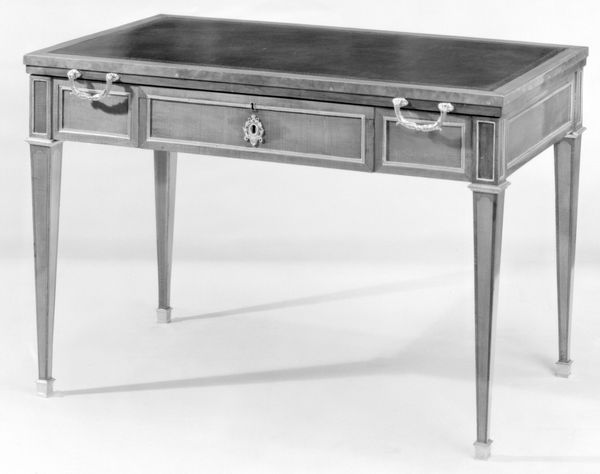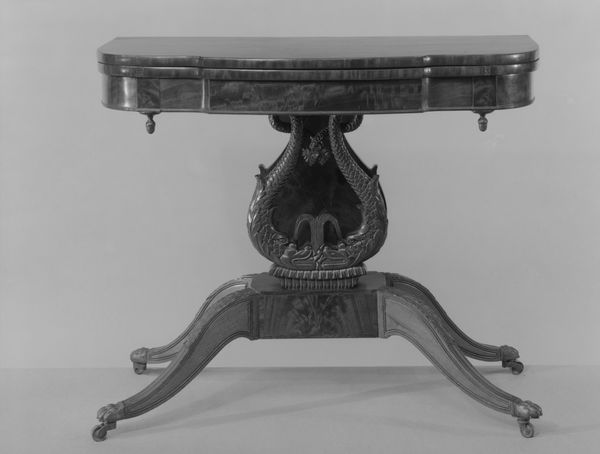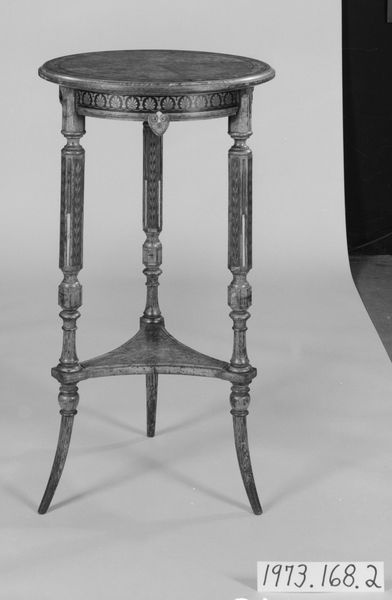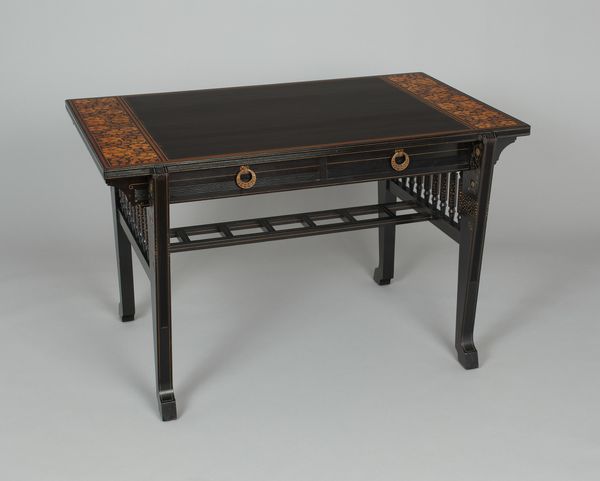
sculpture, wood
#
furniture
#
sculpture
#
wood
#
decorative-art
#
rococo
Dimensions: Overall: 25 3/4 × 21 × 14 1/2 in. (65.4 × 53.3 × 36.8 cm)
Copyright: Public Domain
Curator: Looking at this delicate writing table, I’m immediately struck by the way it manages to feel both grounded and like it might float away any minute. Editor: It’s true. And this beautifully crafted piece, made of wood, is attributed to Roger Vandercruse, known as Lacroix. It's currently housed in the Metropolitan Museum of Art, and dates back to between 1755 and 1775. Its essence really embodies the Rococo style of the time. Curator: Oh, Rococo alright! All those elegant curves and subtle flourishes… it's pure opulence, a visual whisper of privilege and the aristocratic culture that sustained it. It almost feels like furniture sculpted for a dream. Editor: Absolutely, its social and historical context is fascinating. These decorative arts tell tales beyond aesthetics, don’t they? This era was marked by rigid social hierarchies, where the elite flaunted their wealth through exquisite craftsmanship. We see evidence of this throughout Rococo pieces. Curator: Precisely. And objects like this table played a performative role. It was not just for writing, was it? It communicated the owner's refinement, leisure, and participation in courtly rituals. The wave-like ornamentation hints to themes like the female nude that informed so much furniture making during this period. Editor: And you can just picture someone jotting down witty repartee before an extravagant ball! The contrast between the rectangular gridwork on the table top and those flowing curves below adds an intriguing tension to the object. Do you think that could reflect inner turmoil beneath a veneer of order? Curator: An astute observation. Perhaps the grid represents societal constraints, the need for reason and order, while the flowing lines evoke passion or rebellion, challenging these same structures? I am unsure! What seems sure, though, is that something that seems pretty initially hides several cultural conflicts. Editor: A beautiful dance of form and meaning then. Well, thinking about it has inspired a bit of poetry actually, perhaps in my notebook in my…desk! I feel a whole new train of thought…! Curator: Exactly, each objet d’art encapsulates unique historical narrative which speaks not only of artists or individual consumers, but wider questions about class, gender, and power!
Comments
No comments
Be the first to comment and join the conversation on the ultimate creative platform.
